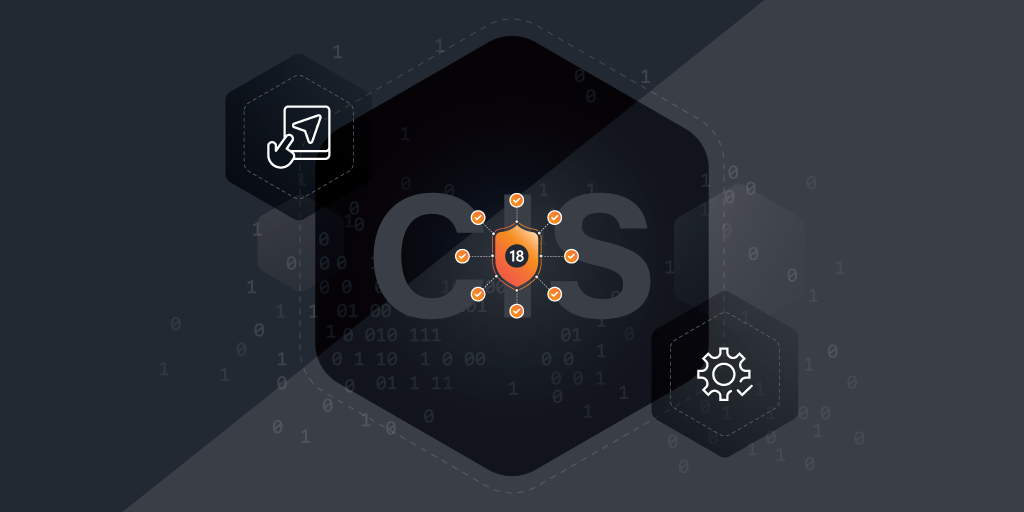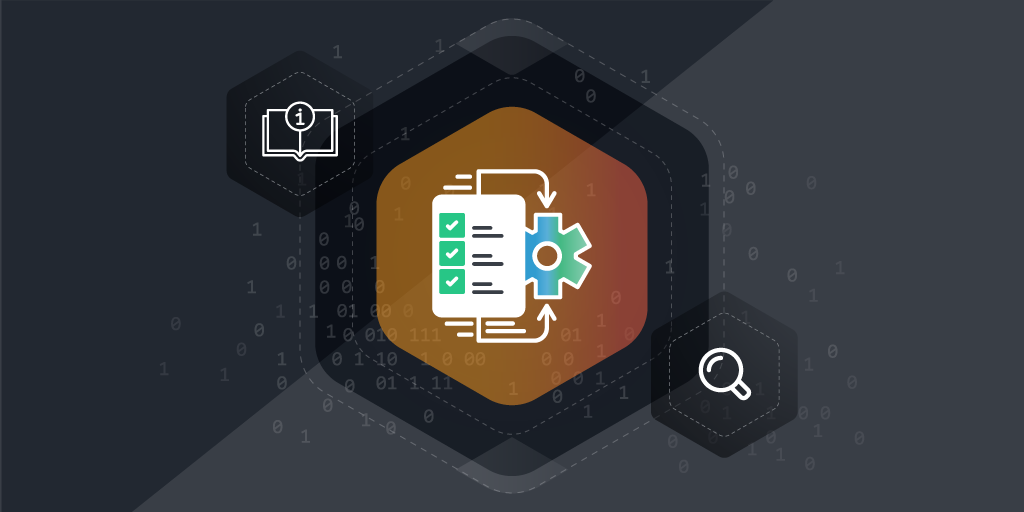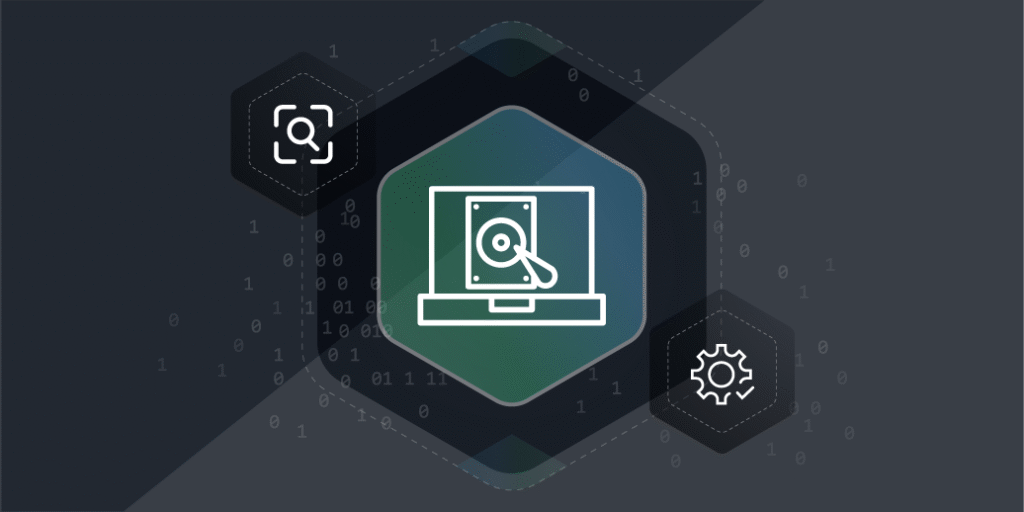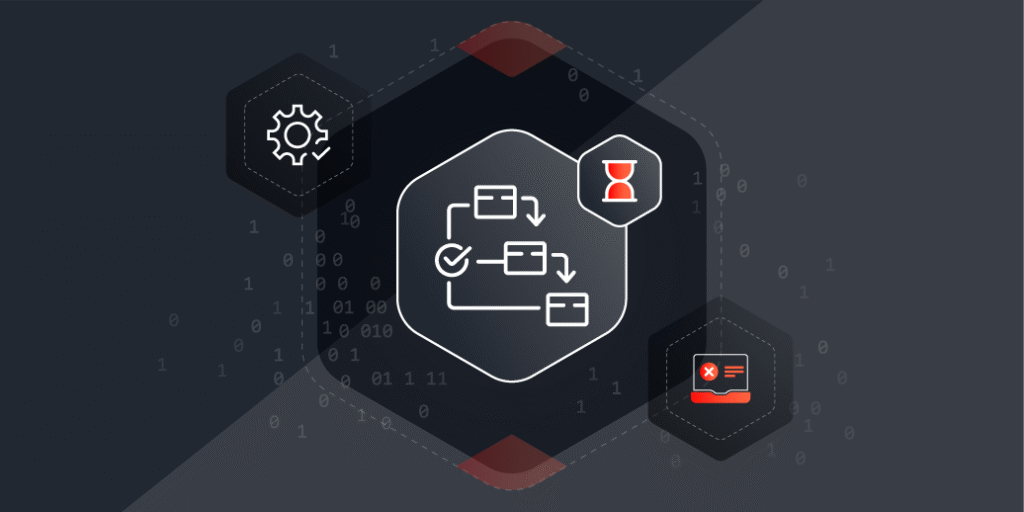Navigating CIS Controls in 2025
Contents

Cyber threats demand precision, speed, and adaptability. The CIS Controls have evolved from a strong foundation into an essential playbook for securing your IT environments. Whether you manage on-premise systems, cloud workloads, or hybrid environments, these security controls provide a framework to keep you ahead of emerging threats.
What Are the CIS Controls and Why Are They Important?
CIS Controls, also known as CIS Critical Security Controls, are a set of practical cybersecurity guidelines that help your organization protect its systems from attacks. They provide a clear roadmap for your IT team, making it easier for you to focus on the most important security measures without getting lost in unnecessary complexity. With cyber threats growing more advanced, having a structured security approach is more important than ever and CIS Controls provide just that.
The Benefits of Implementing CIS Controls
CIS Controls go beyond compliance — they provide a strategic framework for reducing risk and improving cybersecurity. Organizations that adopt these best practices can expect reduced attack surfaces and more efficient incident response. By enhancing system visibility and streamlining security operations, CIS Controls help you minimize downtime and strengthen your critical infrastructure against evolving threats.
How CIS Controls Help You Navigate Evolving Cybersecurity Threats in 2025
Ransomware, supply chain attacks, and AI-driven threats are forcing organizations to rethink their security strategies. CIS Controls provide a structured, risk-based approach to addressing these challenges by prioritizing defensive measures that deliver the most impact.
Today, the framework consists of 18 key controls, covering everything from asset management and vulnerability mitigation to continuous monitoring and incident response. CIS Controls are designed to align with regulatory requirements and industry standards. It integrates seamlessly with automated security tools which enables your organization to enhance its visibility, reduce attack surfaces, and implement a proactive security strategy.
Common Obstacles Faced When Adopting CIS Controls
CIS Controls offer immense benefits, but implementation isn’t always smooth. Resistance from leadership, misalignment with existing policies, and lack of automation can slow down adoption. Here’s how to tackle these hurdles.
1. Lack of Executive Buy-In
Security isn’t just an IT issue; it’s a business imperative. Still, many CISOs and IT teams struggle to secure funding and executive support for CIS Controls implementation. Leadership often prioritizes revenue-generating projects over security investments, viewing compliance as a cost center rather than a strategic advantage.
Why This Matters:
Without executive sponsorship, security teams face budget constraints, lack of staffing, and resistance to new policies. This leads to delayed security projects, gaps in compliance, and increased risk exposure.
How to Overcome It:
- Speak the Business Language: Avoid technical jargon when presenting CIS Controls to executives. Instead of saying, “We need to enforce CIS Control 6 (Access Control Management) to manage access permissions,” frame it as, “Without proper access control, a single compromised credential could lead to a company-wide breach, costing millions.”
- Quantify the Impact: Demonstrate how CIS Controls reduce financial and reputational risk. Use case studies of breaches in similar industries to show the cost of inaction.
- Tie Security to Compliance and Revenue: Show how compliance with CIS benchmarks supports regulatory requirements (GDPR, CMMC, HIPAA), reducing legal risks and enabling business growth.
2. Integration Complexities
Many organizations operate with a patchwork of legacy systems, cloud services, and third-party applications, making the integration of the CIS Controls a challenge. Security teams struggle with:
- Adapting CIS Benchmarks to hybrid environments.
- Ensuring compatibility with existing SIEM, SOAR, and identity management solutions.
- Balancing security enforcement with operational efficiency.
Why This Matters:
Poor integration leads to visibility gaps, inefficient security workflows, and inconsistent enforcement of security policies.
How to Overcome It:
- Adopt an API-First Approach: Choose security tools that offer API integrations for seamless implementation of CIS Controls.
- Leverage Configuration Management Tools: Automate security configurations using Ansible, Terraform, or cloud-native security services (AWS Security Hub, Azure Security Center).
- Pilot Small-Scale Deployments: Test CIS Controls in a controlled environment before rolling out enterprise-wide.
3. Manual Processes
Relying on spreadsheet tracking, manual audits, and one-off compliance checks is a recipe for inefficiency. Many organizations still conduct security assessments annually rather than continuously monitoring compliance with CIS standards.
Why This Matters:
- Human error leads to misconfigurations, leaving security gaps.
- Security teams waste time on repetitive tasks, reducing their ability to focus on threat detection and response.
- Delayed patching increases vulnerability windows, exposing critical systems to attacks.
How to Overcome It:
- Automate Compliance Audits: Use tools that continuously scan systems for compliance with CIS Benchmarks, reducing manual workloads.
- Implement Continuous Monitoring: Replace periodic assessments with real-time security validation to detect drift and enforce controls dynamically.
- Standardize Security Policies: Develop automated workflows that enforce CIS Controls at scale across hybrid environments.
Overcoming Challenges CIS Controls Implementation
Successfully implementing CIS Controls requires a strategic approach. Your IT team must automate enforcement, align security with business objectives, and create standardized processes to ensure consistency.
1. Automate Security Enforcement
Scaling security without automation is a losing battle. Instead of juggling manual checks, organizations need automated CIS benchmark assessments that continuously monitor compliance and enforce security controls, saving time, reducing human error, and keeping defenses strong around-the-clock.
Implementation Tips:
- Deploy automated configuration checks using CIS-certified scanning tools such as Tenable, Qualys, and Rapid7.
- Use policy-as-code frameworks (e.g., Open Policy Agent, HashiCorp Sentinel) to enforce security policies programmatically.
- Integrate security automation into DevSecOps pipelines to validate compliance before deployment.
2. Align with Business Goals
Security initiatives stick when they’re seen as business enablers, not just technical necessities. Executives care about efficiency, risk reduction, and staying compliant—not the nuts and bolts of security frameworks. To get leadership on board with CIS Controls, security teams need to connect the dots between cybersecurity investments and real business impact, showing how stronger security translates to fewer disruptions, lower costs, and a competitive edge.
Demonstrate Tangible Business Benefits
A strong security framework directly impacts uptime, customer trust, and regulatory compliance. Mapping CIS Controls to business outcomes helps executives see the value beyond IT. For example, improved access controls reduce the likelihood of costly data leaks, while automated threat detection minimizes downtime caused by cyber incidents.
Highlight Cost Savings and ROI
Security investments often face scrutiny because leadership needs to justify expenses. Demonstrating the cost benefits of automation, such as reducing manual security audits or streamlining compliance reporting, strengthens the case for CIS Controls. Reducing breach-related costs, including legal fees, fines, and reputational damage, also resonates with decision-makers focused on financial risk management.
Position Security as a Competitive Advantage
In industries where cybersecurity compliance is a differentiator, a strong security posture can open doors to new business opportunities. Organizations that adhere to CIS Controls demonstrate due diligence, making them more attractive partners for enterprises that require high security standards. This is particularly true for companies in finance, healthcare, and SaaS, where regulatory frameworks and customer expectations demand rigorous cybersecurity practices.
Speak the Language of Executives
Security teams often struggle to gain leadership buy-in because discussions focus on technical risks rather than business impact. Framing security initiatives in terms of risk reduction, operational continuity, and competitive positioning makes it easier to secure executive support. Instead of detailing firewall configurations or encryption protocols, highlight how CIS Controls contribute to long-term business resilience and customer trust.
By aligning CIS Controls with business goals, security teams can move beyond reactive cybersecurity measures and position themselves as strategic partners in the organization’s success.
3. Standardize Processes
A fragmented approach to security leads to inconsistent implementations of CIS Controls across departments. Establishing clear security standards ensures uniform adoption across your organization.
Best Practices for Standardization:
- Develop CIS-aligned security baselines for cloud, on premises, and hybrid environments.
- Create automated security playbooks that IT teams can follow for common tasks like access provisioning, vulnerability patching, and network segmentation.
- Train your IT and security teams on CIS Controls to ensure alignment across departments.
Best Practices for Successful CIS Controls Implementation
1. Leverage Security Orchestration (SOAR)
Security Orchestration, Automation, and Response (SOAR) platforms streamline CIS Critical Security Controls management by:
- Automating threat detection and response to enforce security policies in real time.
- Integrating with SIEM and endpoint detection solutions to correlate security events with CIS Controls.
- Reducing alert fatigue by prioritizing high-risk vulnerabilities based on threat intelligence.
How to Get Started:
- Choose a SOAR platform that supports CIS Controls automation.
- Develop automated playbooks for key security incidents like privilege escalation attempts or unapproved software installations.
- Implement event-driven automation to enforce CIS policies dynamically.
2. Prioritize High-Impact Controls
Some CIS Controls have a greater impact on risk mitigation than others. Your IT team should focus on quick wins that provide the most immediate security gains.
Top Controls to Implement First:
- Asset Inventory (CIS Control 1): Automate discovery of all endpoints, servers, and cloud resources to eliminate shadow IT.
- Vulnerability Management (CIS Control 7): Deploy automated vulnerability scanning tools to identify and remediate weaknesses.
- Secure Configurations (CIS Control 4): Apply CIS Benchmarks to harden OS and application configurations across environments.
3. Monitor Continuously
Security isn’t a one-and-done process. Continuous validation ensures that CIS cybersecurity controls remain effective as environments evolve.
Key Monitoring Practices:
- Deploy real-time security analytics to track compliance deviations.
- Use deception technologies (honeypots, canary tokens) to detect lateral movement before breaches escalate.
- Conduct regular red team exercises to test the effectiveness of CIS Controls against real-world attack scenarios.
Security isn’t static. Neither should your approach to CIS Controls be. Automate where possible, align security with business goals, and keep evolving because cybercriminals certainly will.
Navigating the Changing Cybersecurity Landscape
In 2025, security strategies must be predictive, automated, and intelligence-driven to combat increasingly sophisticated attack methods. Your organization is likely to fall behind if it doesn’t adapt to new risks as attackers leverage AI, automation, and advanced social engineering to exploit vulnerabilities faster than ever.
Emerging Cybersecurity Threats in 2025 and Beyond
The attack surface is expanding, and adversaries are innovating new ways to infiltrate networks. Organizations must be prepared to counter:
AI-Driven Attacks
- Autonomous Hacking: Attackers use AI-powered tools to automate reconnaissance, vulnerability discovery, and exploit execution. These systems can bypass traditional security defenses by adapting in real time.
- Adversarial Machine Learning (AML): Malicious actors manipulate AI models, tricking automated security systems into misclassifying threats or allowing unauthorized access.
- AI-Generated Malware: Self-evolving malware learns from detection attempts, altering its code dynamically to avoid signature-based detection.
Deepfake Phishing
- Voice and Video Spoofing: Attackers use AI-generated audio and video to impersonate executives or IT personnel, manipulating employees into divulging sensitive data.
- Credential Theft via Synthetic Identities: Phishing campaigns leverage realistic deepfake personas to trick employees into revealing login credentials or approving fraudulent transactions.
Supply Chain Exploits
- Third-Party Compromise: Cybercriminals target vendors and suppliers with weaker security postures to infiltrate larger enterprise networks.
- Compromised Software Updates: Attackers insert malicious code into software updates, infecting thousands of organizations in a single coordinated attack (e.g., SolarWinds-style incidents).
Trends and Advancements in Cybersecurity Technology
As threats grow more sophisticated, organizations are adopting next-generation cybersecurity solutions to defend against emerging risks.
Zero Trust Expansion
- Identity-First Security: Traditional perimeter defenses are being replaced with granular identity verification, requiring continuous authentication for all users and devices.
- Microsegmentation: Networks are divided into isolated segments, preventing lateral movement in case of a breach.
AI-Powered Threat Detection
- Behavioral Analytics: AI continuously monitors user and device behavior, flagging anomalies that could indicate insider threats or compromised accounts.
- Predictive Security Models: Advanced AI models analyze historical attack patterns to forecast and prevent potential breaches.
Automated Threat Hunting
- Real-Time Threat Neutralization: AI-driven security tools detect, analyze, and respond to cyber threats without human intervention.
- SOAR Integration: Automates security workflows, reducing response times from hours to seconds.
Adapting CIS Controls to Address Evolving Threats
CIS Controls have always provided a solid foundation for securing IT environments, but as cyber threats grow more sophisticated, your security strategy needs to evolve. Static defenses and manual processes won’t cut it anymore. To stay ahead, you need automation, intelligence, and adaptability built into your cybersecurity approach.
One of the most effective ways to strengthen security is through automated policy enforcement. Instead of setting static security rules and hoping they hold, you can deploy dynamic policies that adjust in real time based on the latest threat intelligence. This proactive approach shuts down vulnerabilities before attackers can exploit them. Automated compliance checks take it a step further, continuously scanning for misconfigurations and security gaps so your team doesn’t have to hunt them down manually.
Cloud security has also become a core part of CIS Controls, especially as hybrid and multi-cloud environments grow. Traditional perimeter-based defenses aren’t enough to protect today’s distributed workforce and cloud-hosted data. You need identity-centric and software-defined protections that scale with your environment. Secure Access Service Edge (SASE) solutions, for example, blend Zero Trust principles with cloud security enforcement, keeping remote users, applications, and sensitive data locked down—no matter where they are.
AI-driven threat intelligence is another game changer. Machine learning models process massive amounts of global threat data, identifying patterns and risks faster than human analysts ever could. Instead of relying on static risk assessments, AI continuously refines security policies based on real-world attack trends. Vulnerability management gets a boost too—AI prioritizes threats based on exploitability, so you’re always fixing the most pressing issues first. And with automated remediation, you don’t have to wait for patching cycles to kick in—critical vulnerabilities get addressed before attackers even have a chance.
The evolution of CIS Controls reflects what modern cybersecurity demands automation, intelligence, and flexibility. If you want to keep your security strategy relevant, now’s the time to embrace these advancements. The threats won’t slow down, but with the right approach, you can stay ahead.
Role of CIS Controls in Data Security
With data being the most valuable asset for your organization, cybercriminals are finding more ways to exploit it. Ransomware attacks have become more sophisticated, locking businesses out of critical systems and demanding hefty payments.
Data exfiltration is on the rise, with attackers quietly stealing sensitive information before organizations even realize there’s been a breach. Supply chain attacks add another layer of complexity, where vulnerabilities in third-party vendors or software updates serve as backdoors for cybercriminals to infiltrate your network. In this environment, securing your data means more than just avoiding threats—it’s about protecting what drives your business forward.
Protecting Sensitive Data with CIS Controls
- CIS Control 3: Data Protection – Establishes encryption, access control mechanisms, and data loss prevention (DLP) strategies.
- Automated Data Classification – AI-powered classification tools scan, tag, and enforce security controls on sensitive data across on premises and cloud environments.
Data Privacy Regulations and Compliance
- Aligning with GDPR, CCPA, and NIST Standards – CIS benchmarks provide a structured approach to maintaining compliance with global data privacy laws.
- Security-by-Design Principles – Ensures security is embedded from the software development lifecycle (SDLC) to IT operations.
Data Breach Prevention and Incident Response with CIS Controls
- Real-Time Incident Detection – Continuous monitoring detects anomalies and triggers alerts before data exfiltration occurs.
- Automated Response Mechanisms – Security playbooks execute preconfigured responses, isolating infected systems and containing threats.
CIS Controls and the CISO’s Strategic Role
CISOs are no longer solely responsible for security. They are now business leaders who align cybersecurity with organizational growth and resilience.
The Evolving Role of the CISO in 2025
- Security-First Business Strategy: Cybersecurity is a core business enabler, influencing boardroom discussions and investment decisions.
- AI-Driven Decision Making: CISOs rely on AI analytics for real-time risk assessments, predictive security planning, and automated policy enforcement.
Collaboration Between CISOs and IT Teams for CIS Controls Implementation
- DevSecOps Integration: Security is embedded in every stage of the development lifecycle, preventing vulnerabilities from being introduced in software releases.
- Security Awareness Training: Employees receive continuous training on identifying phishing attempts, insider threats, and evolving attack methods.
CIS Controls as a Strategic Asset for CISOs
- Enhancing Compliance Readiness: Automated compliance tracking ensures continuous alignment with industry regulations, reducing audit burdens.
- Reducing Attack Surfaces: A structured security framework helps organizations proactively eliminate security gaps before they can be exploited.
Future Trends and Innovations in CIS Controls
As cyber threats grow more sophisticated, CIS Controls continue to evolve by integrating advanced automation, AI-driven security, and cloud-native protections. These advancements are reshaping how organizations defend their networks, detect threats, and respond to incidents in real time.
Advancements in CIS Controls Technology
Self-healing systems are becoming a reality, with AI-driven security platforms capable of detecting vulnerabilities, isolating compromised systems, and autonomously applying patches before attackers can exploit weaknesses. These innovations significantly reduce response times and minimize the need for manual intervention.
Threat intelligence sharing is also transforming cybersecurity strategies. Organizations are now exchanging real-time threat data, allowing them to anticipate attacks based on patterns observed across industries. This collective defense approach strengthens security by providing broader visibility into emerging threats.
Automation and AI in CIS Controls Management
AI-driven compliance checks are streamlining security assessments by continuously monitoring configurations and enforcing best practices. Instead of waiting for periodic audits, businesses can now receive real-time alerts when security gaps emerge, allowing them to take immediate corrective action.
Automated remediation is also gaining traction. Security workflows can now detect vulnerabilities and initiate corrective measures without human involvement. For example, if a misconfiguration exposes sensitive data in a cloud storage environment, automation tools can instantly apply security policies, preventing unauthorized access.
The Role of CIS Controls in Securing Remote Access and Cloud Environments
As remote work and cloud adoption expand, organizations are shifting toward identity-based security models. Zero Trust Network Access (ZTNA) ensures that users and devices must pass rigorous authentication checks before gaining access to critical systems. By applying least-privilege principles, businesses can reduce the risk of unauthorized access and insider threats.
Cloud Security Posture Management (CSPM) is also becoming essential. Security teams are now leveraging automated tools to monitor cloud environments for misconfigurations and compliance violations. Instead of relying on manual reviews, CSPM solutions provide continuous visibility into security risks across multi-cloud deployments, helping organizations maintain a strong security foundation.
Stay Ahead of Cyber Threats—Because Guesswork Isn’t a Security Strategy
CIS Controls provide a battle-tested cybersecurity framework that adapts to modern threats and technologies. In 2025, organizations must embrace automation, AI-driven security, and cloud-native protections to stay ahead of attackers. By integrating CIS Controls into their cybersecurity strategy, businesses can safeguard sensitive data, streamline compliance, and ensure long-term resilience against evolving cyber threats.
Transform Your Security Strategy for Tomorrow
CIS Controls aren’t just a security checklist; they’re the foundation for modern cybersecurity resilience. Automation, AI, and strategic alignment transform these controls into a dynamic security framework. But visibility remains a critical challenge. Without a clear, real-time view of every asset in your environment, even the most advanced security strategies fall short.
That’s where Lansweeper’s asset discovery solution comes in. It provides complete visibility into your IT infrastructure, helping you map your security landscape, identify vulnerabilities, and enforce CIS Controls with precision. Discover how Lansweeper can help you can take a proactive stance by implementing the CIS controls with automated asset discovery and real-time security insights
See Lansweeper in Action – Watch Our Demo Video
Sit back and dive into the Lansweeper interface & core capabilities to learn how Lansweeper can help your team thrive.
WATCH DEMOReady to get started?
You’ll be up and running in no time.
Explore all our features, free for 14 days.


